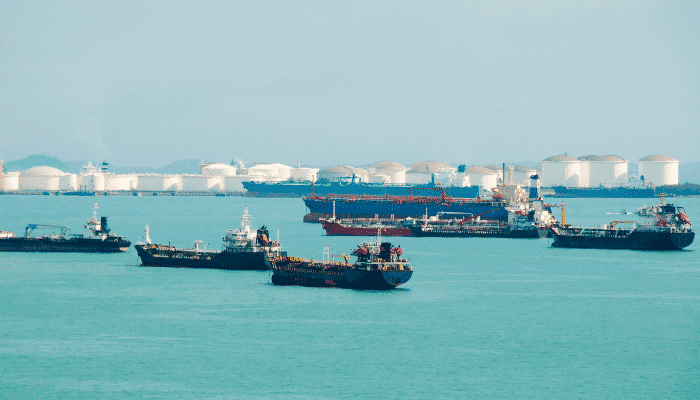

Handling a ship in congested or high traffic areas is not an easy task. Congested waters are high-density traffic areas where a vessel is likely to collide with another vessel if ship navigation is not carried out in the right manner.
Navigation out in open sea isn’t easy either but by virtue of lesser traffic and ample sea room, it doesn’t pose as much of a threat as that posed in congested waters. Approaches such as that in Singapore or China have dense traffic in the form of fishing boats, small crafts in addition to larger merchant vessels which, by default, means that a higher degree of precaution, situational awareness, and decision making is to be exercised under such circumstances.
Factors such as the state of sea, weather, proximity of vessels, status of the ship (underway or making way, laden or under ballast condition etc), interaction with other vessels causing difference in pressure at the bow or stern, proximity to the land, steering gear effectiveness, effectiveness of the aids to navigation, rudder movement, effect of shallows are among many things that are to be adhered to. All of that aforementioned are to be applied in conjunction with COLREGs to ensure that the vessel is safely navigated into and out of the congested area. Rule 18 of COLREGs explicitly state as to which vessel is to be kept out of the way of another, which basically means that a vessel cannot bypass pre existing rules with regard to vessel responsibility.


As there are several vessels present in the vicinity, chances of a collision or any other form of an accident are very high; adherence to COLREGs in such cases is imperative in order to negate any legal liabilities that might arise due to vessel mishandling. In such conditions, the officer on watch and the ship’s master must take all the necessary precautions to avoid any kind of accident. Even in the presence of a Pilot who is, most of the times, thorough with the existing local navigational landscape, the onus of the safety of the vessel lies with the Master; to make it clearer, the presence of a Pilot does not relieve the Master and his bridge team of the obligations to keep clear of other vessels. A comprehensive passage plan along with information pulled from the Admiralty publications (prepared by the 2/O under the authority of the Master) including the presence of Aborts & Contingencies for emergency situations ensures that the whole process of safe navigation runs efficiently.
For navigating through congested waters, the officer on watch must know his duties well and be aware of the positions of ships in the vicinity and other fixed structures. He must make full preparations to sail through such areas. Practical ship handling is a skill acquired with experience, and the OOW must never hesitate to call the Master in case of the slightest doubt. After all, the Master is termed as a ‘Master’ for obvious reasons! Having said that, the following points are laid out to assist the OOW with regard to his decisions in congested waters:




In case the vessel is in congested areas in restricted visibility, the associated risks increase. Rule 19 of COLREGs lays out mandatory rules with regard to navigation in RV which must be adhered to at all times. In addition to the above guidelines, the appropriate light and fog signals for a vessel in RV must be applied as well. For further reading on RV, refer to this article.
Learn all techniques to master ship navigation at the sea in our FREE eBook – A Guide to Ship Navigation Techniques
Disclaimer: The authors’ views expressed in this article do not necessarily reflect the views of The Marine Learners. Data and charts, if used, in the article have been sourced from available information and have not been authenticated by any statutory authority. The author and The Marine Learners do not claim it to be accurate nor accept any responsibility for the same. The views constitute only the opinions and do not constitute any guidelines or recommendation on any course of action to be followed by the reader.
The article or images cannot be reproduced, copied, shared or used in any form without the permission of the author and The Marine Learners.










We believe that knowledge is power, and we’re committed to empowering our readers with the information and resources they need to succeed in the merchant navy industry.
Whether you’re looking for advice on career planning, news and analysis, or just want to connect with other aspiring merchant navy applicants, The Marine Learners is the place to be.